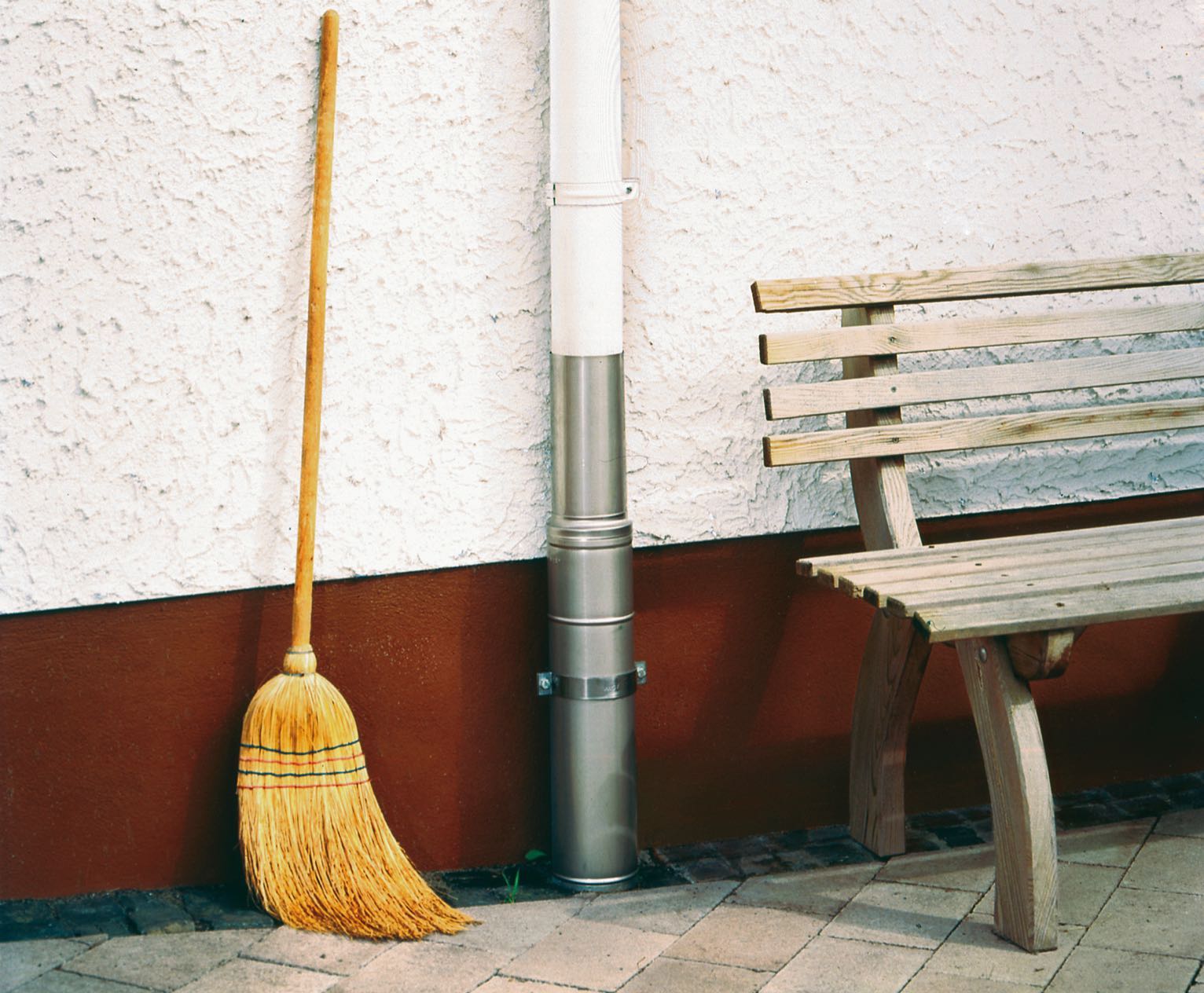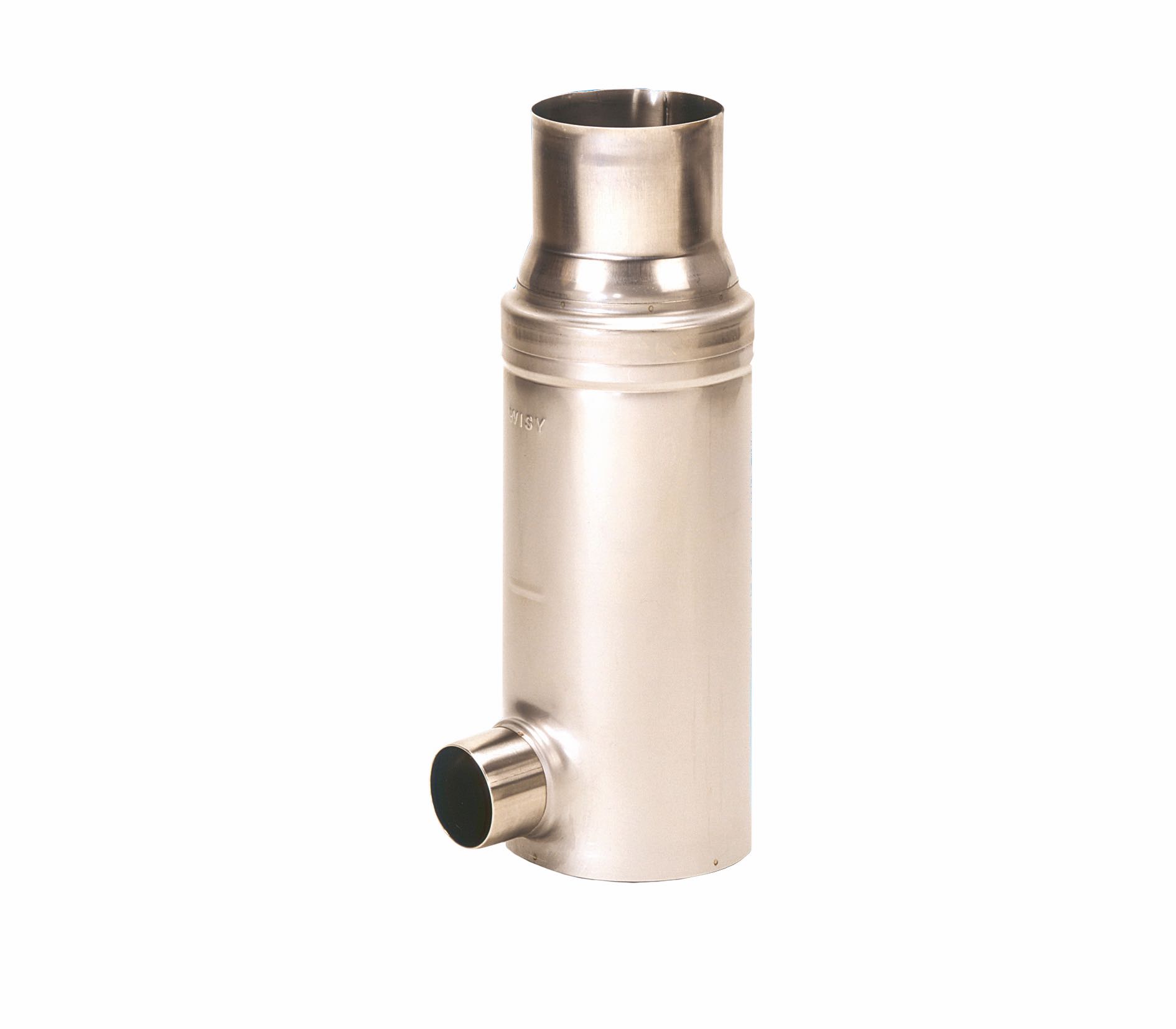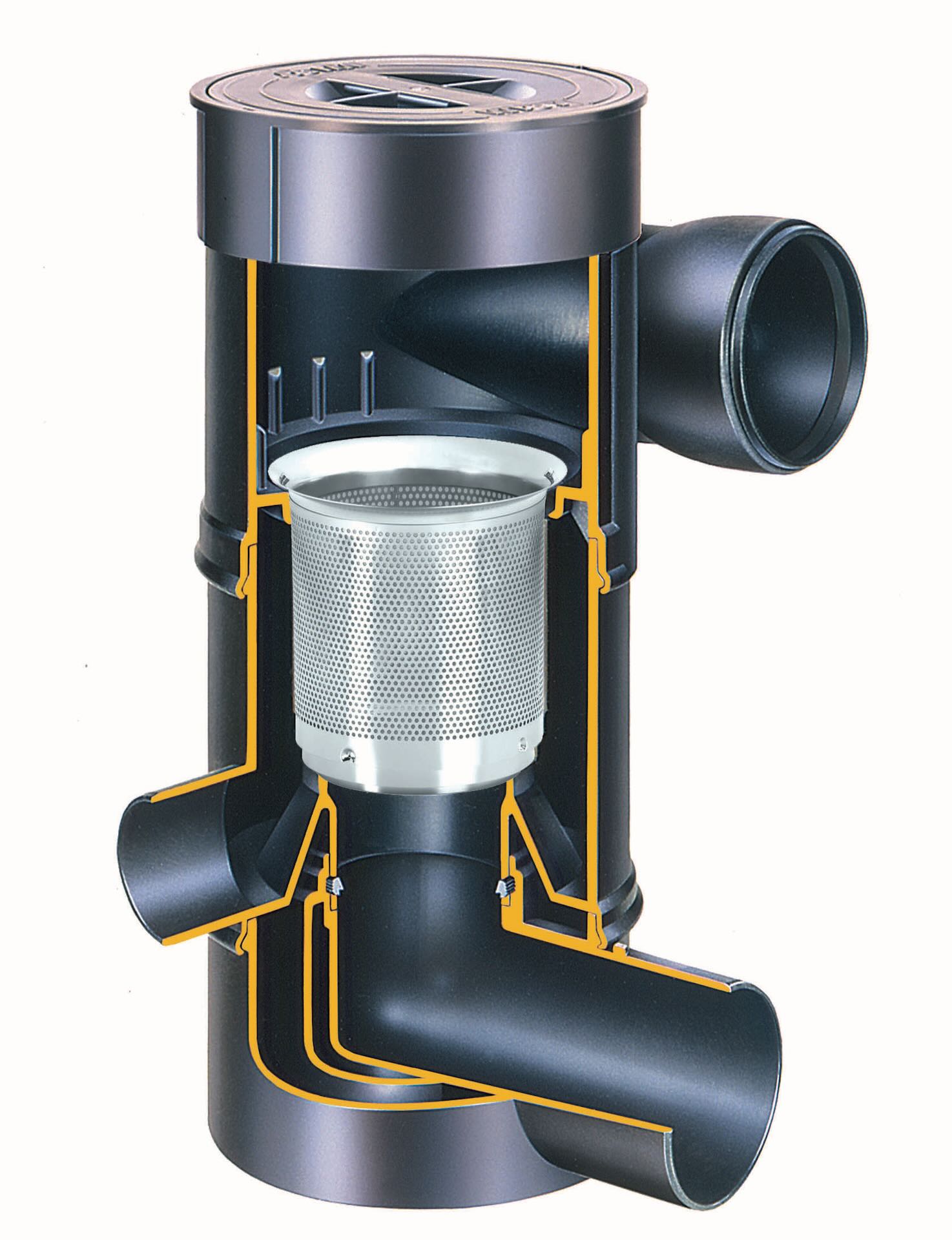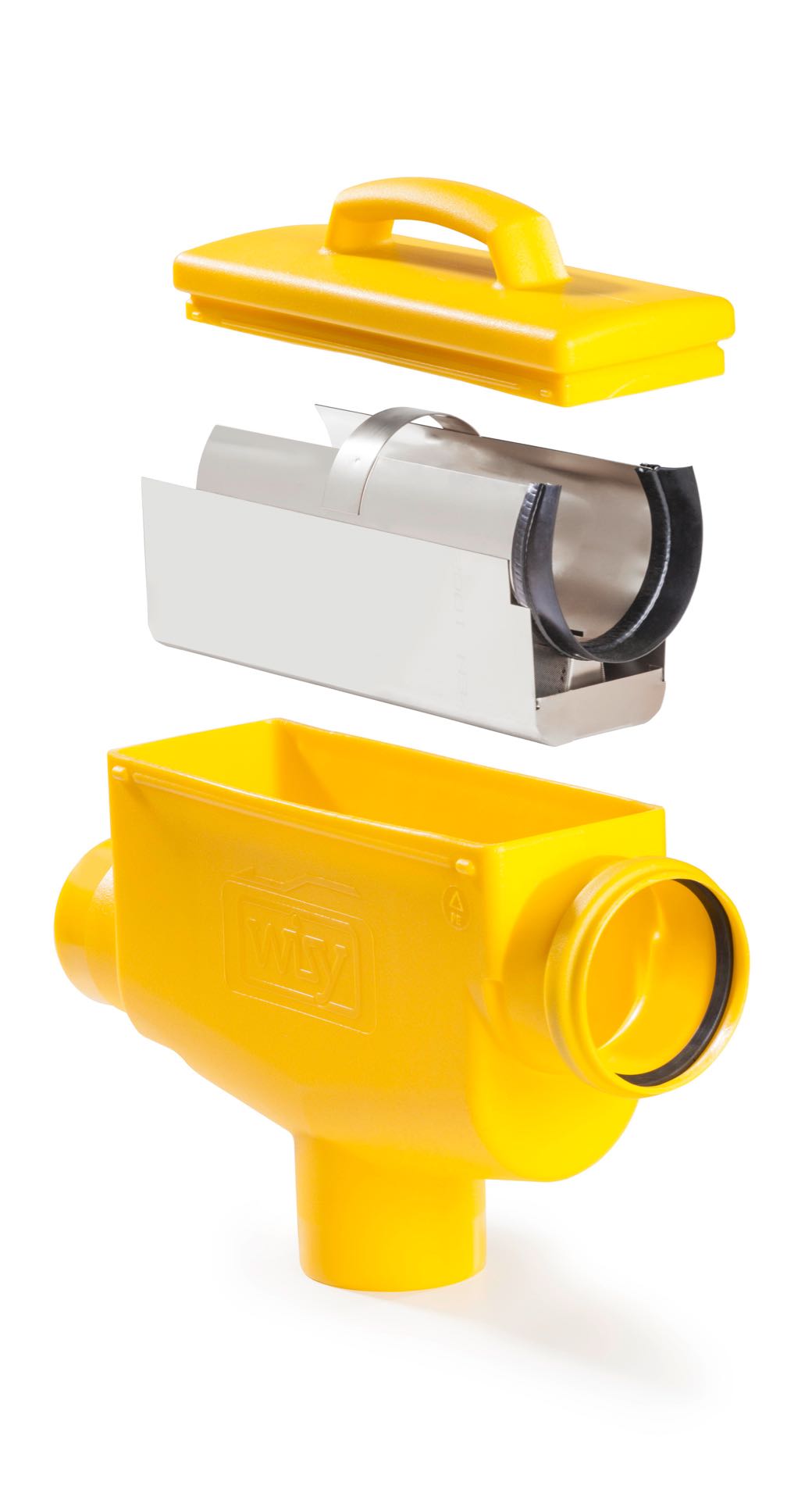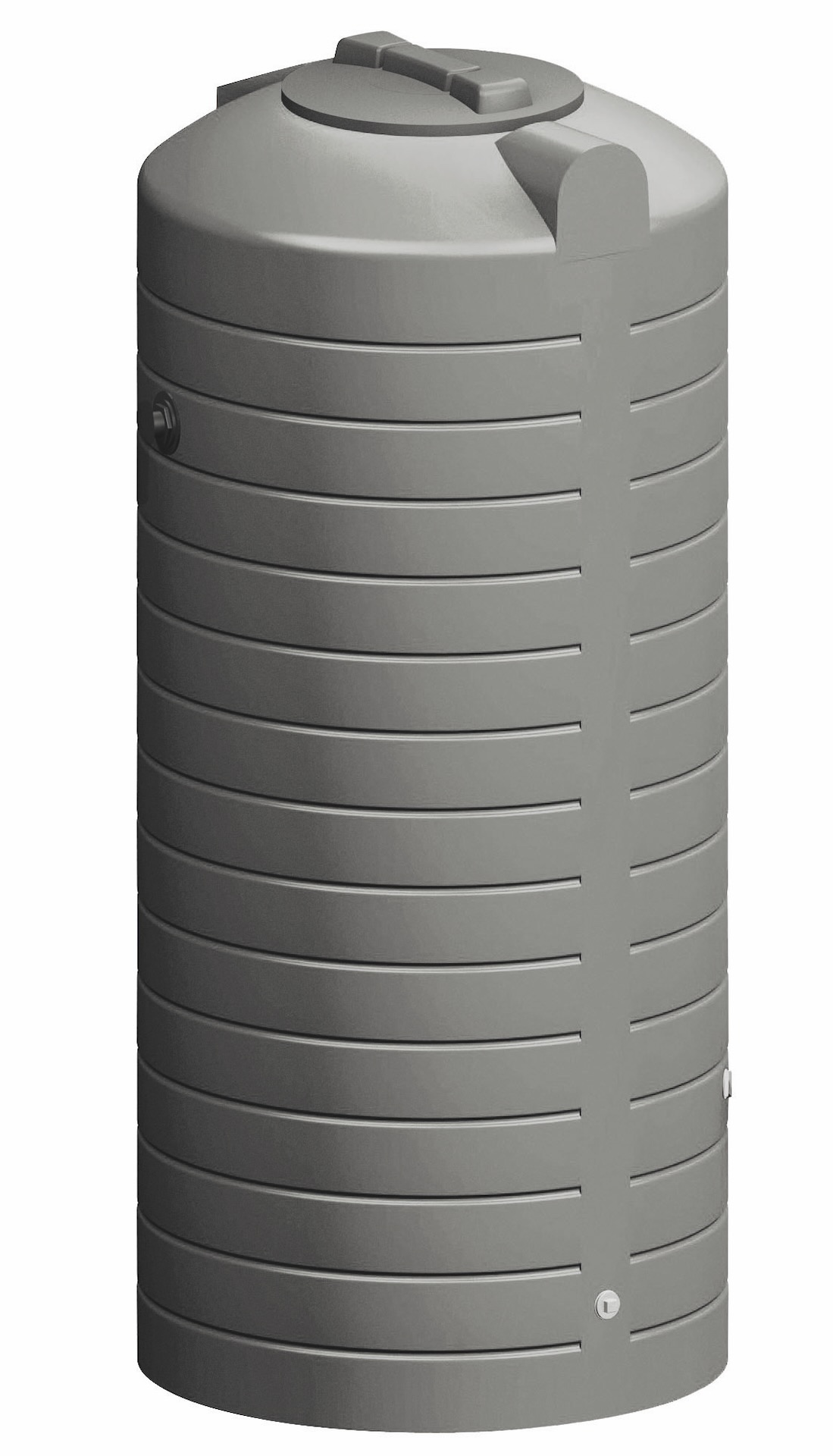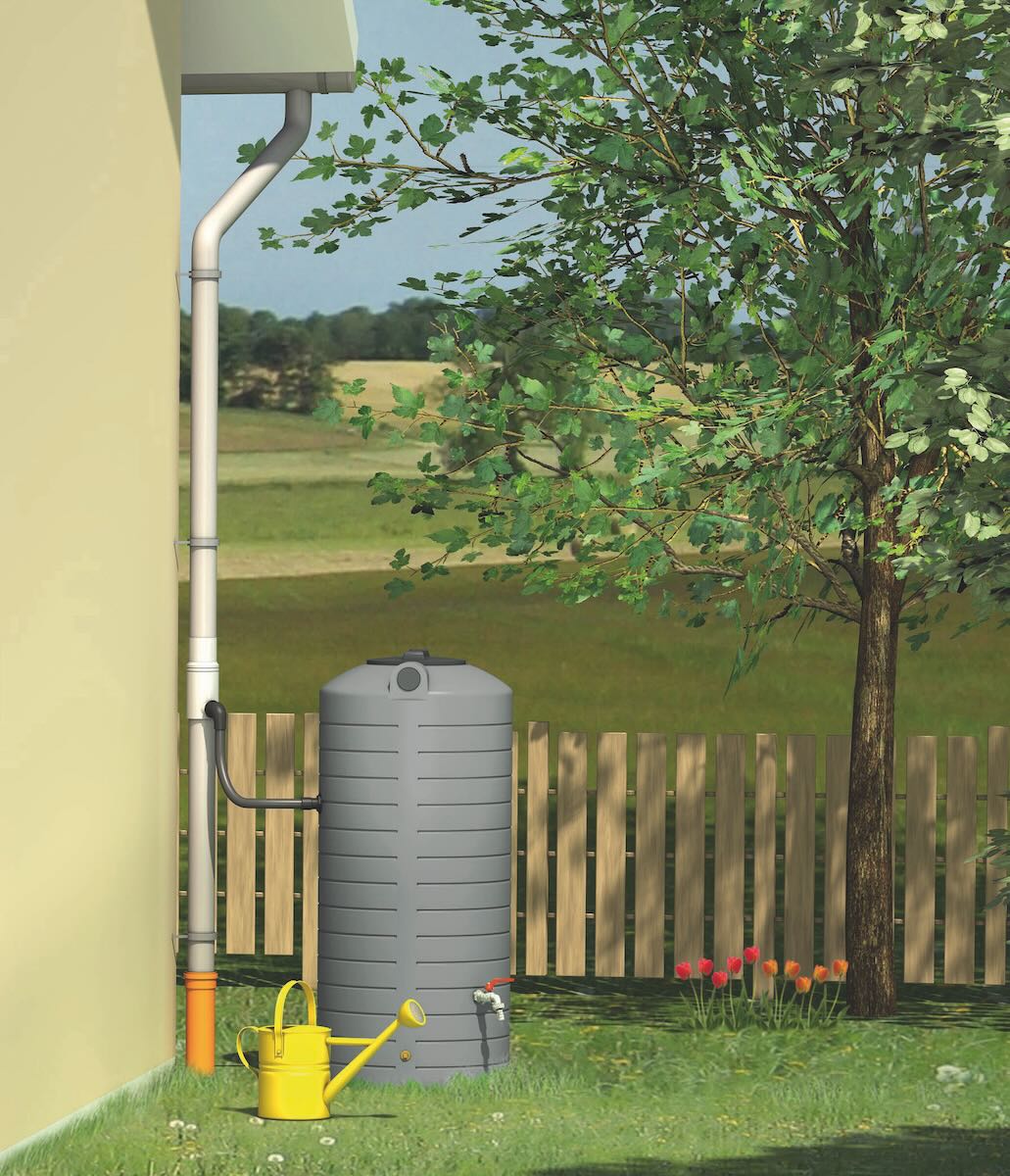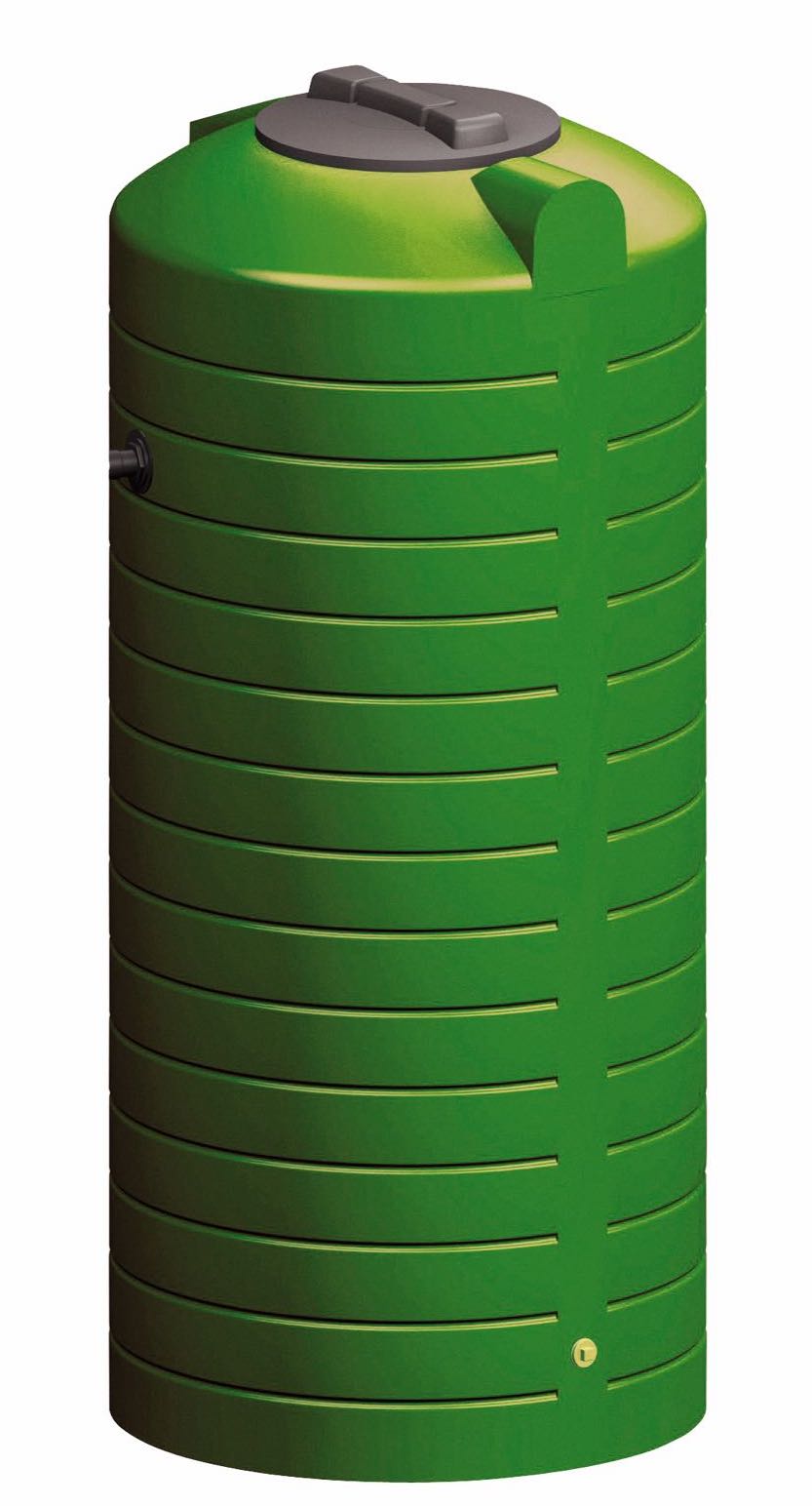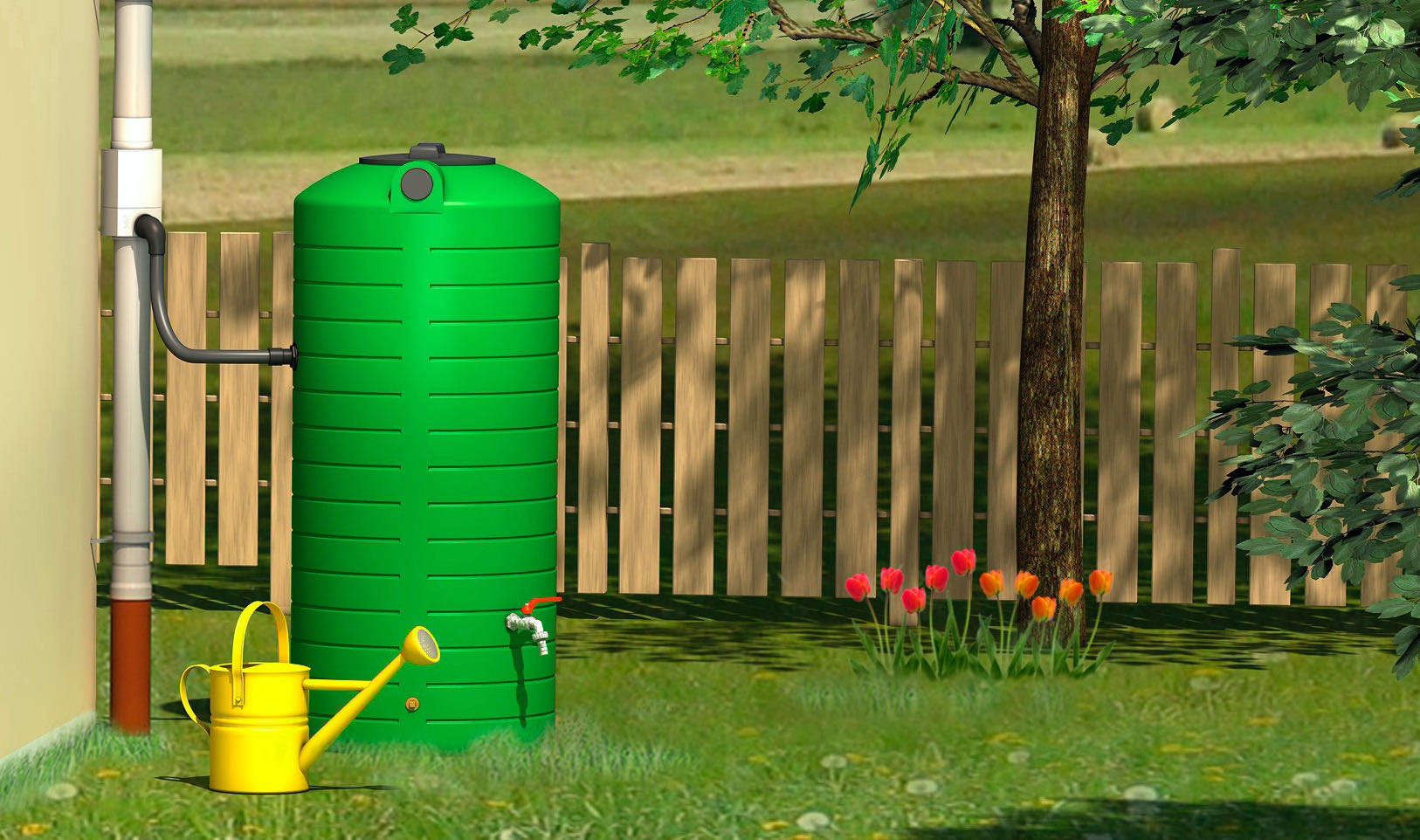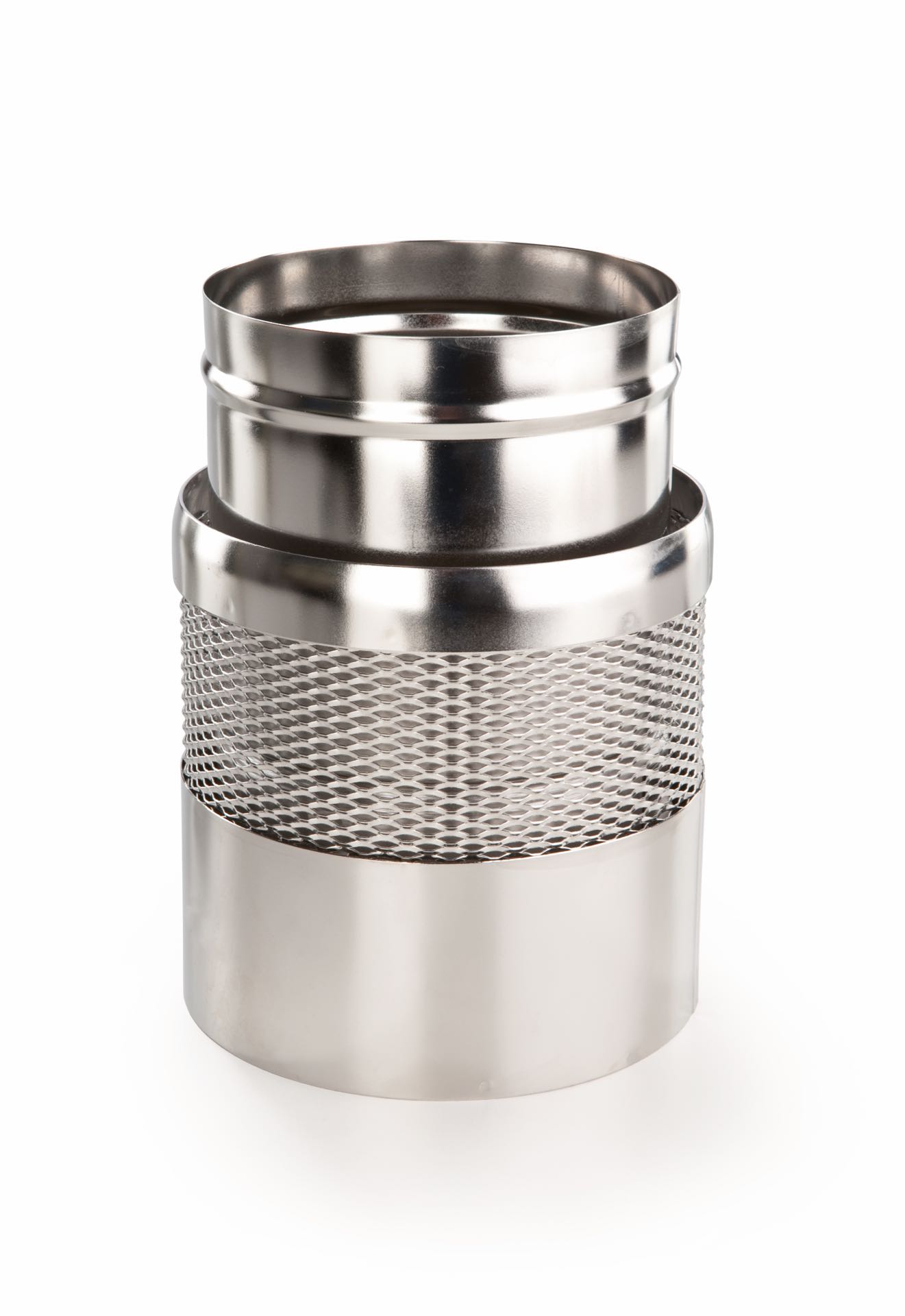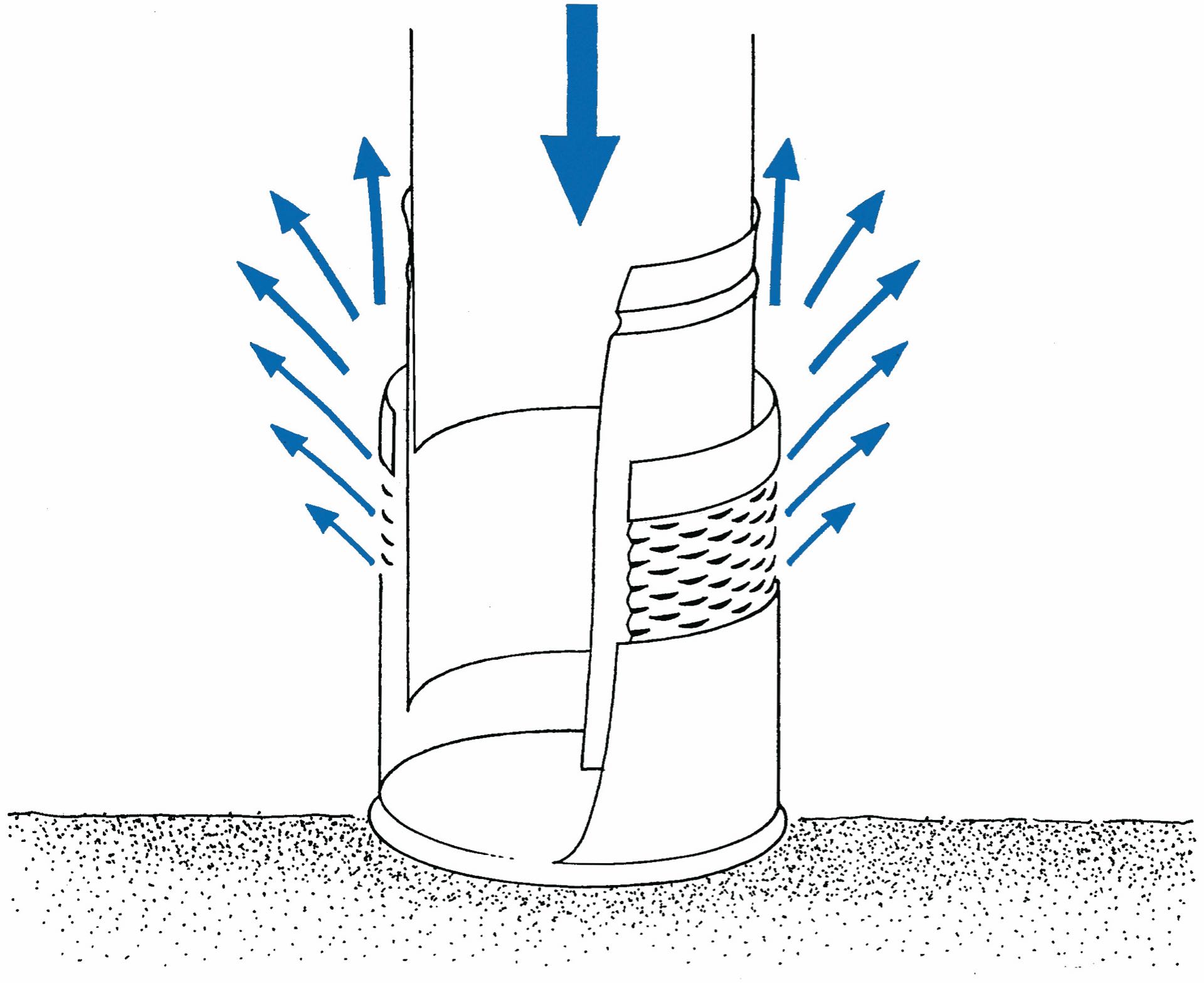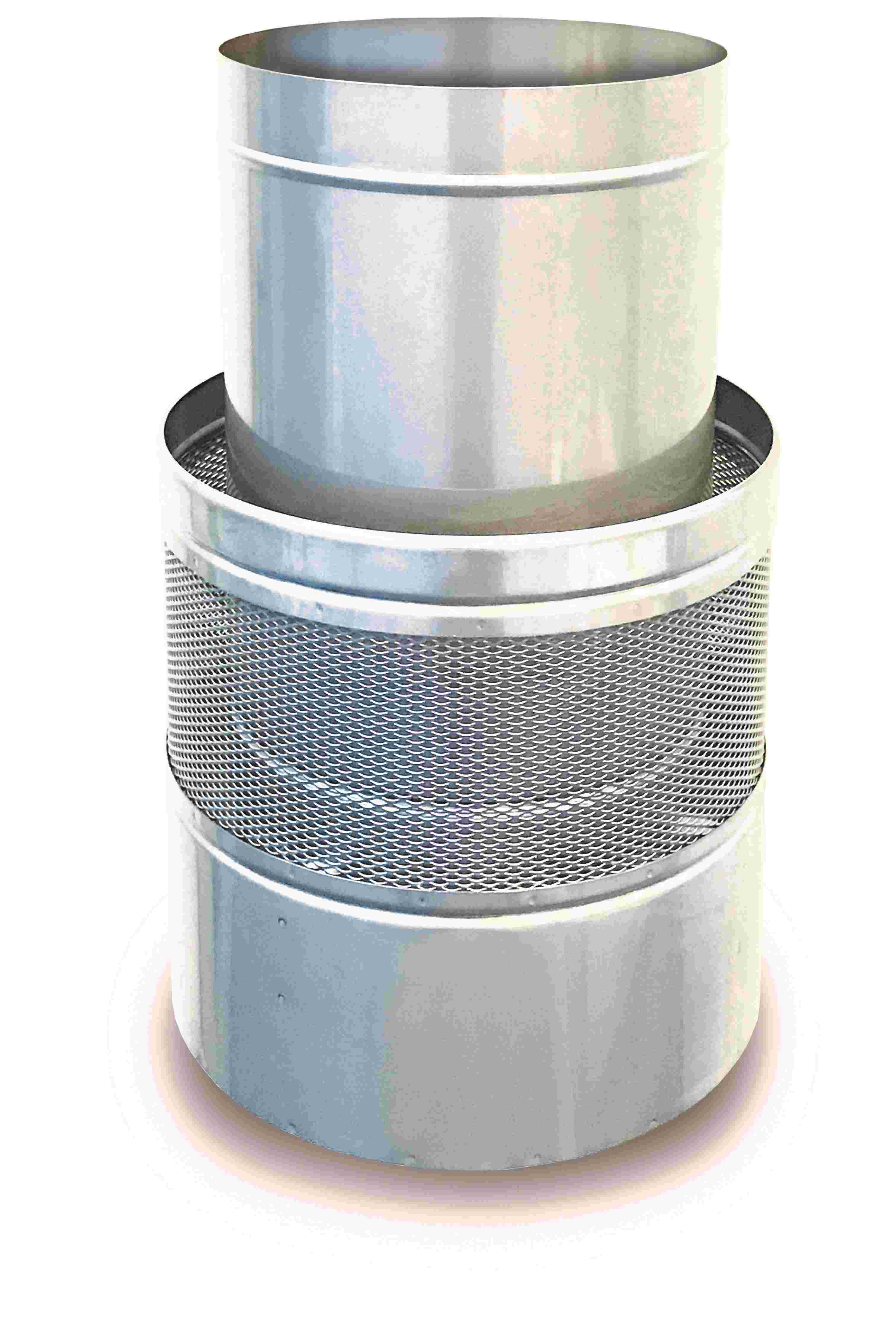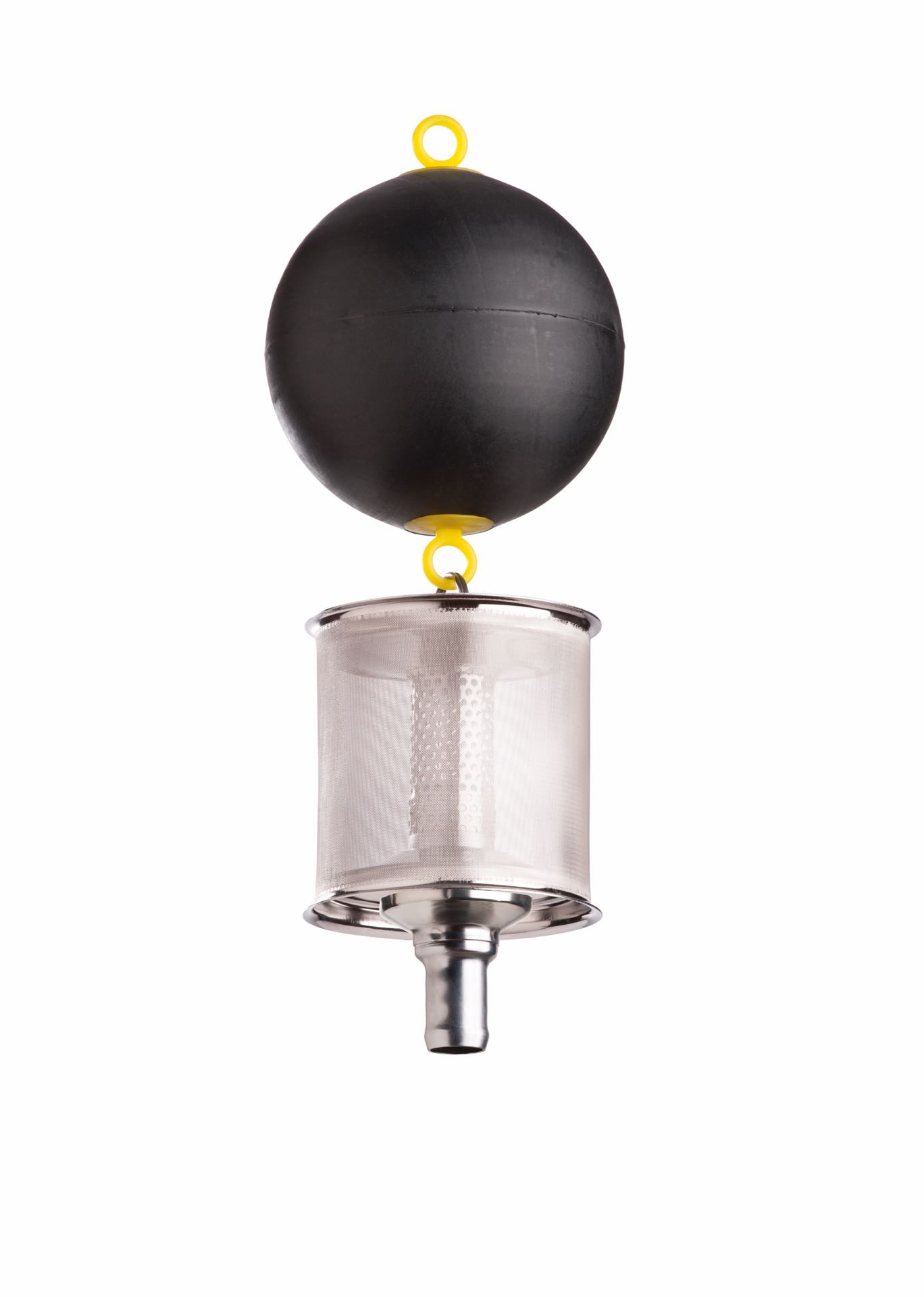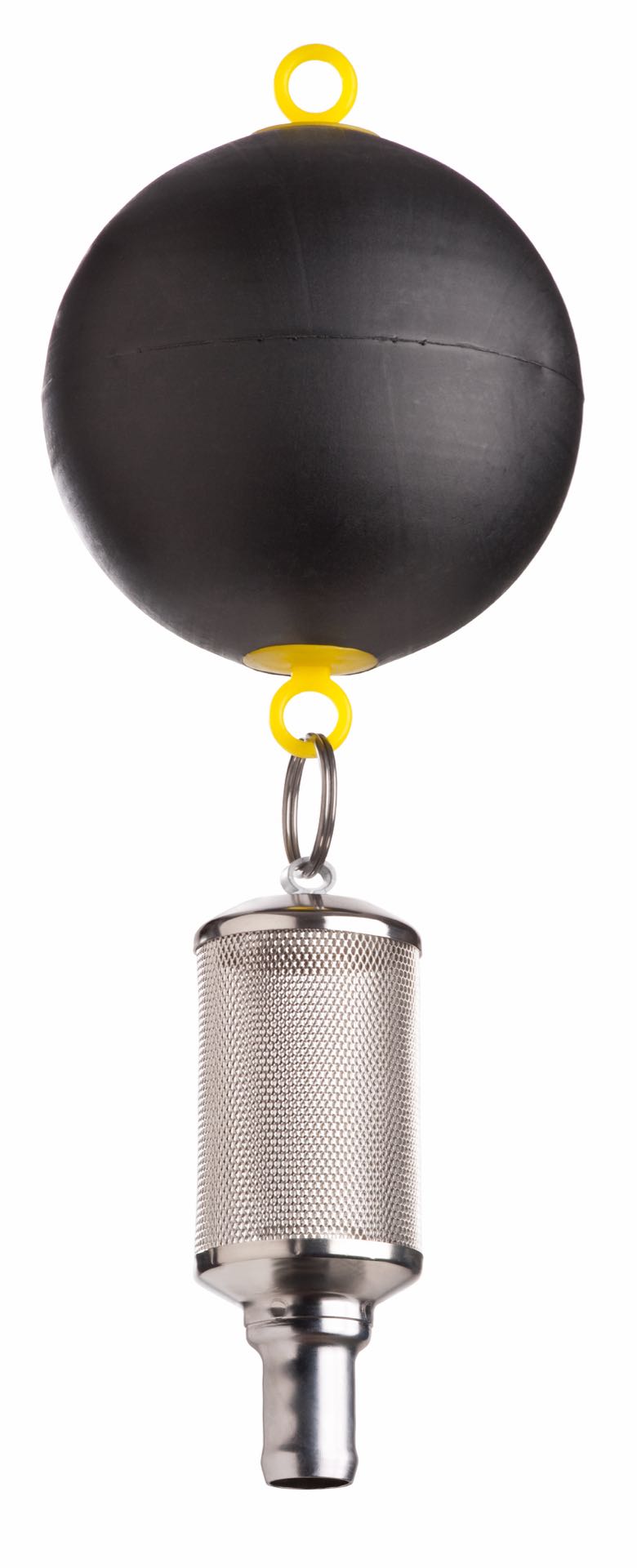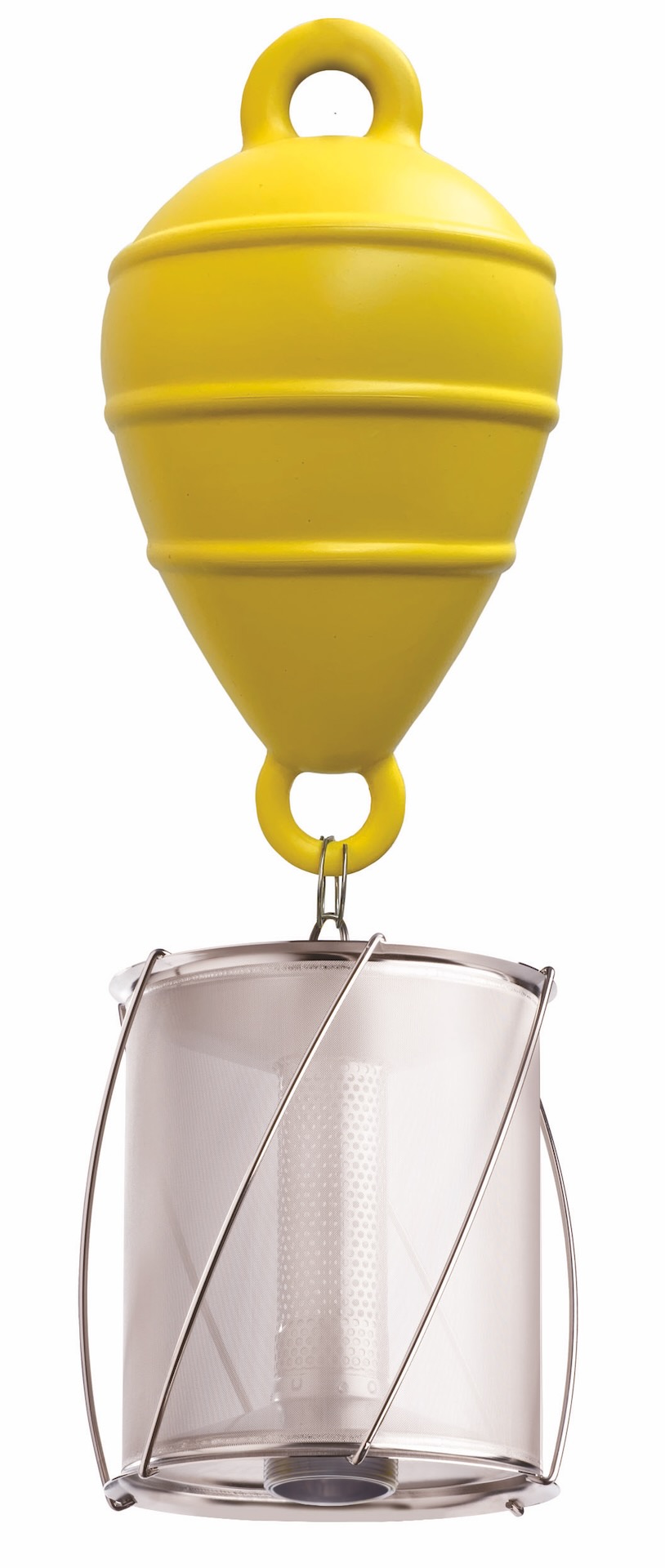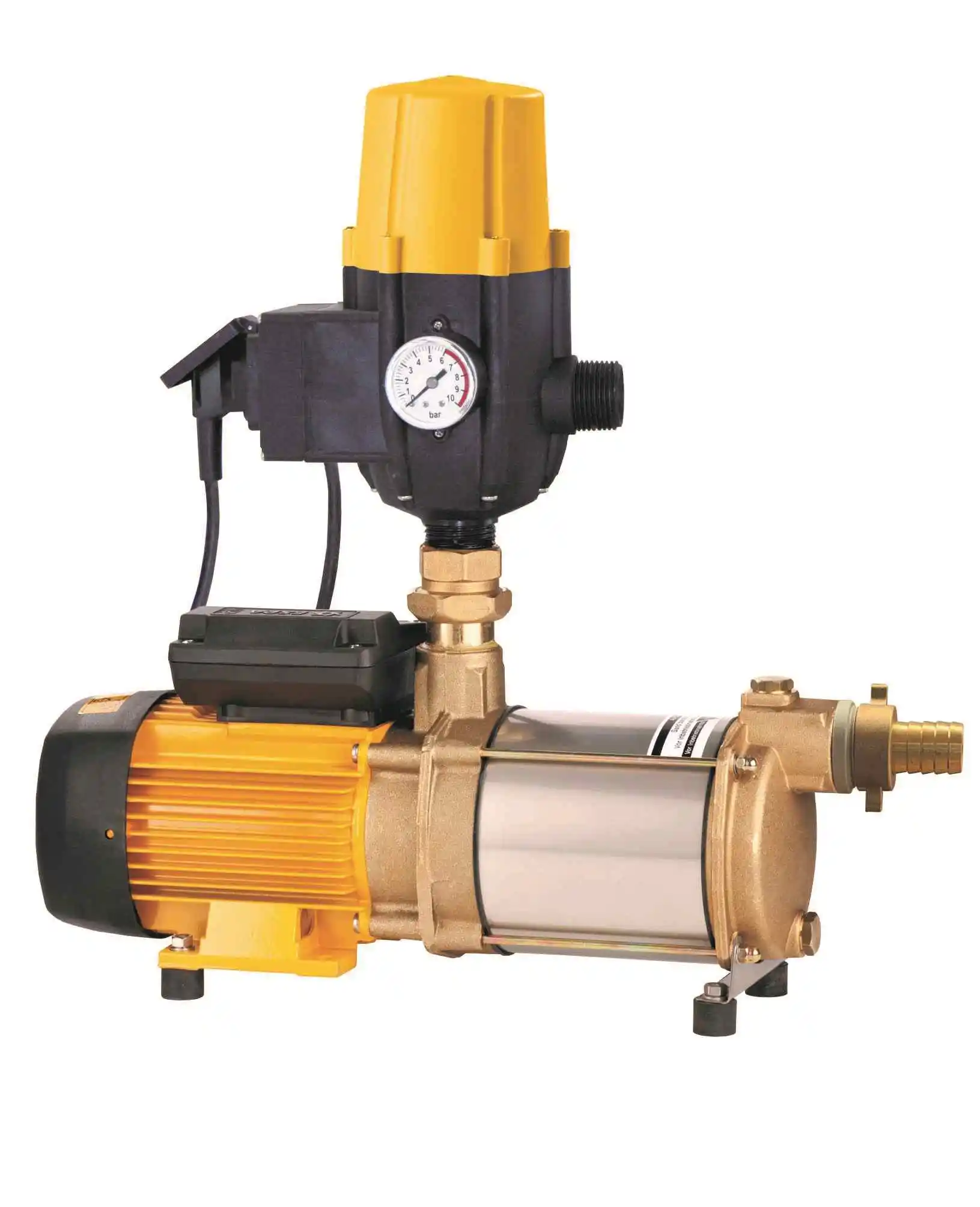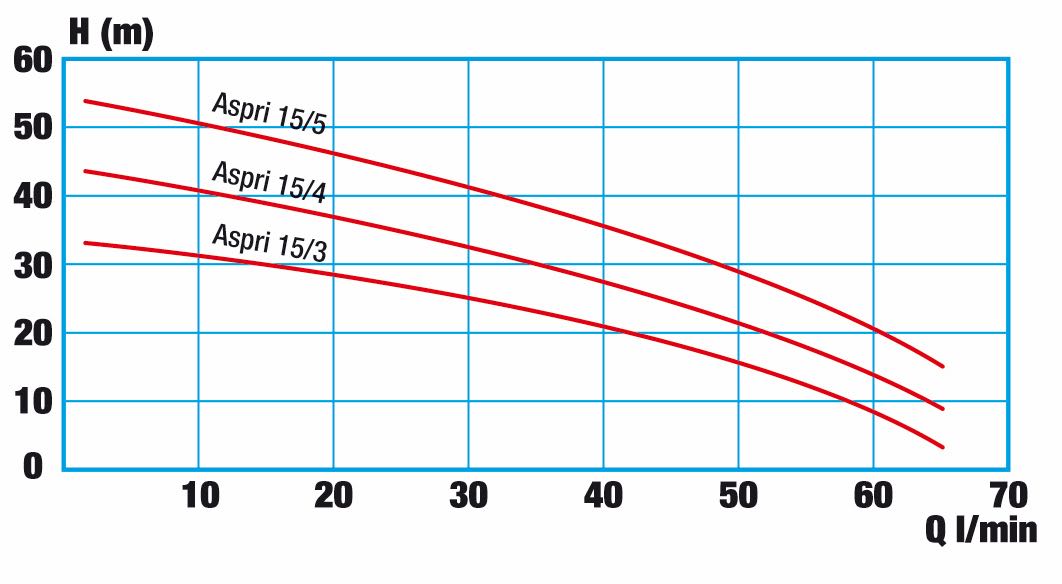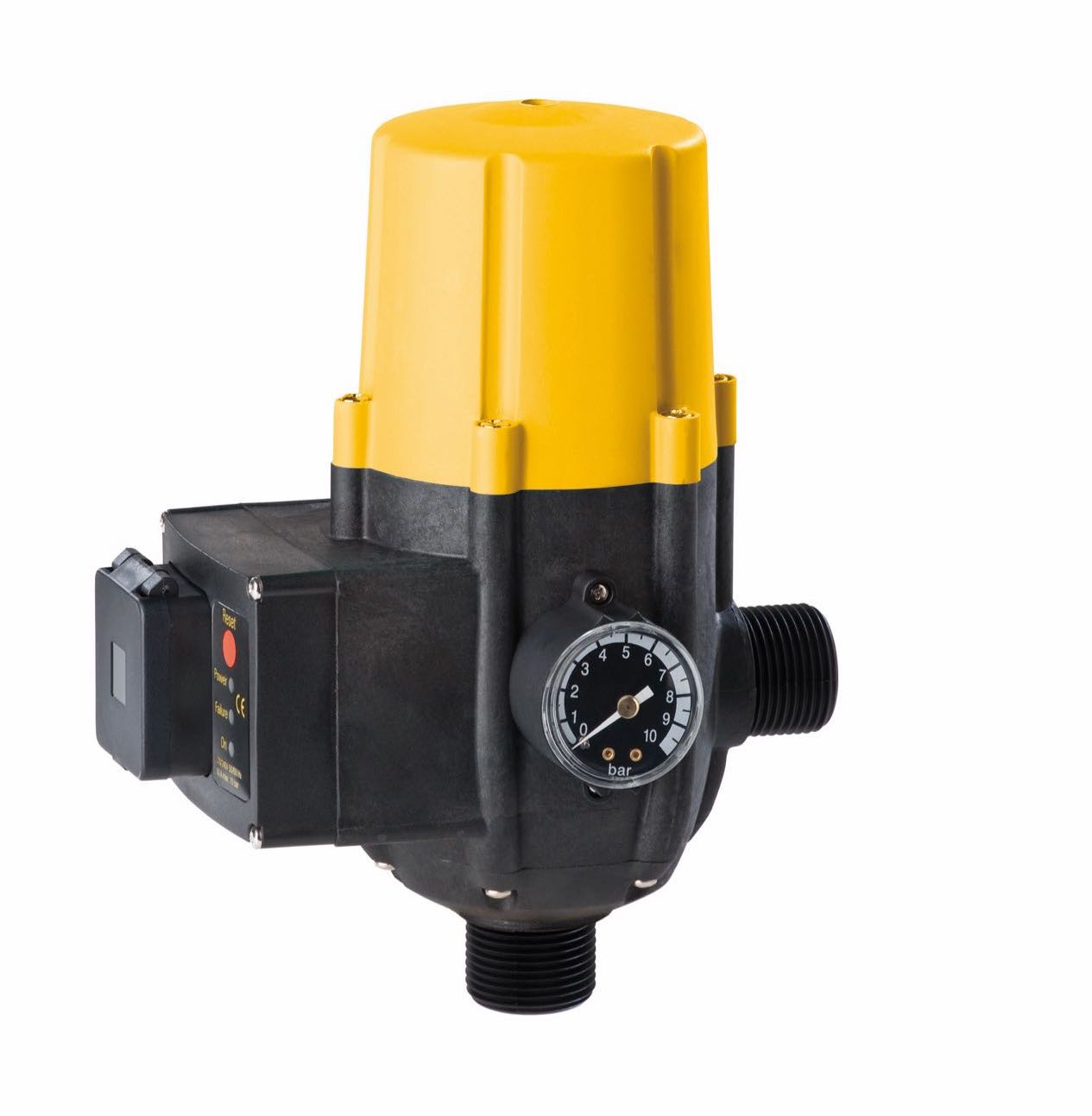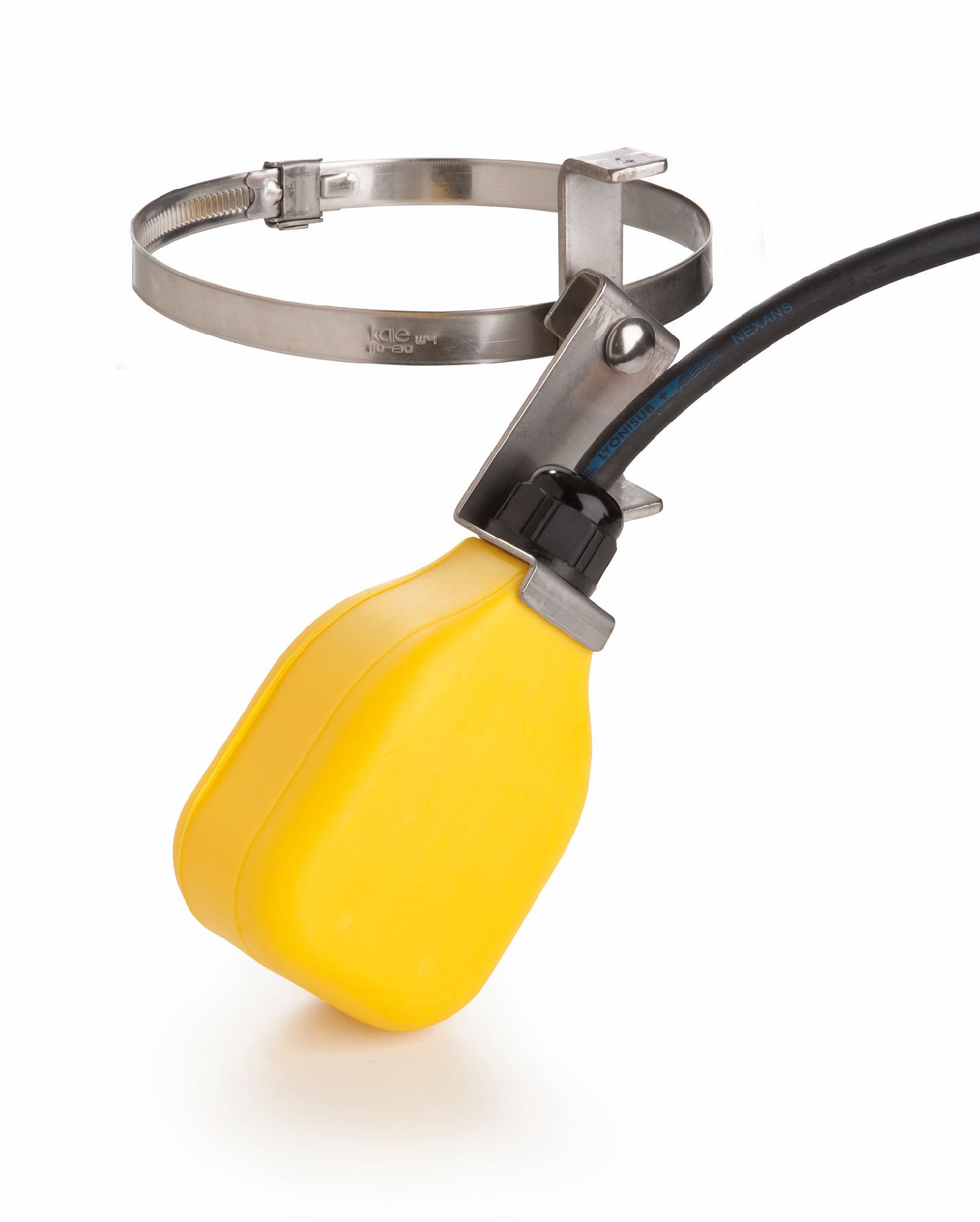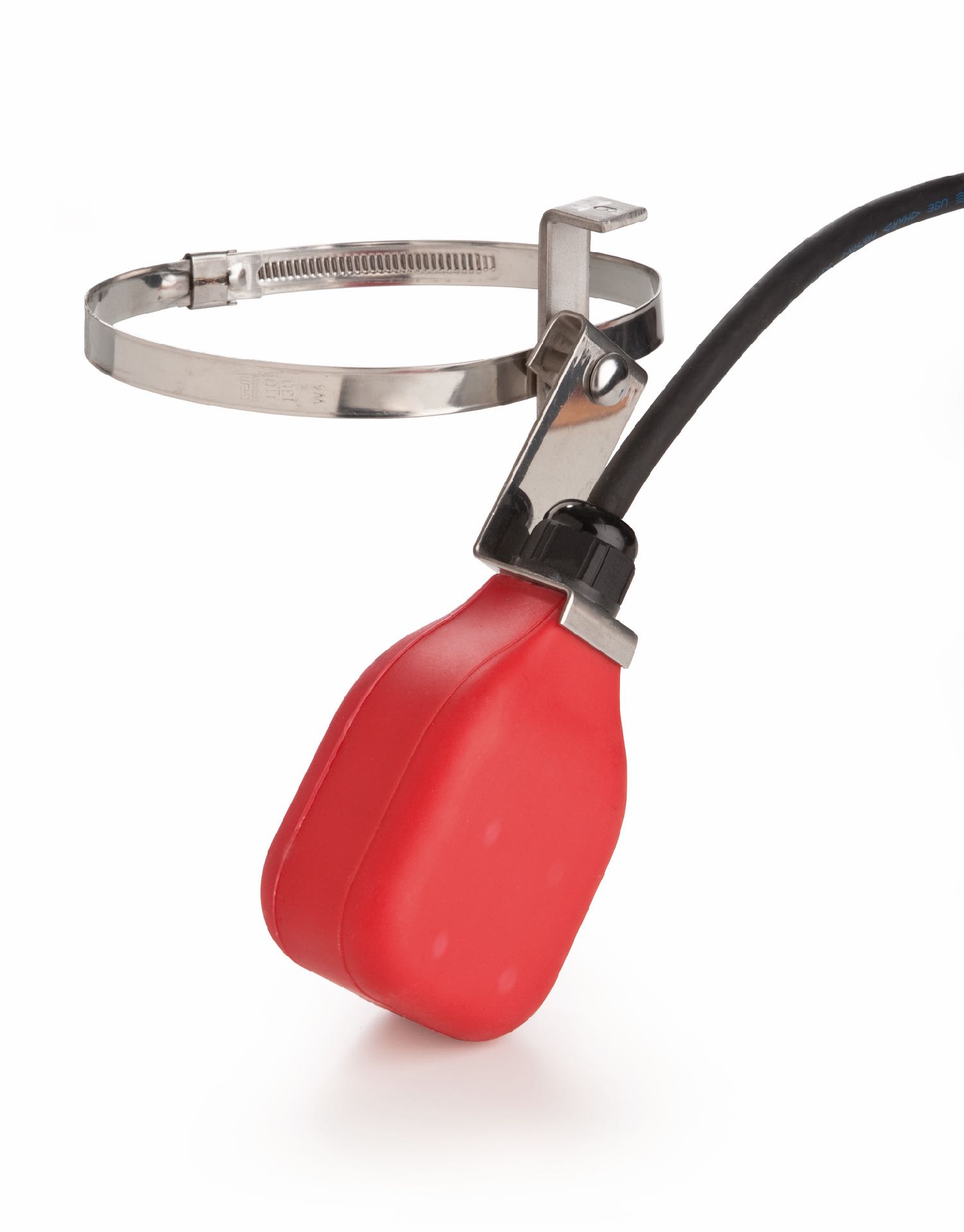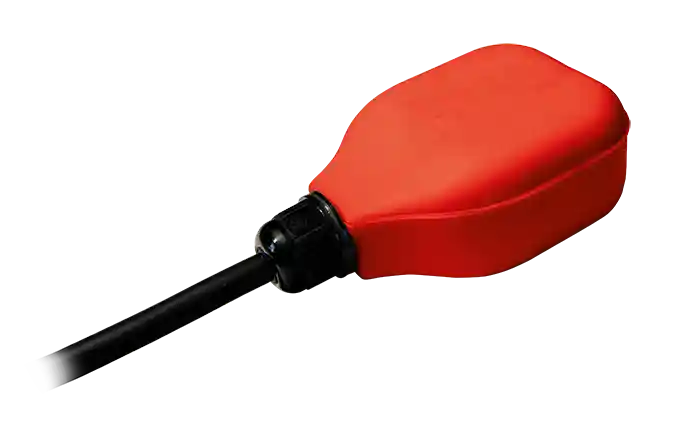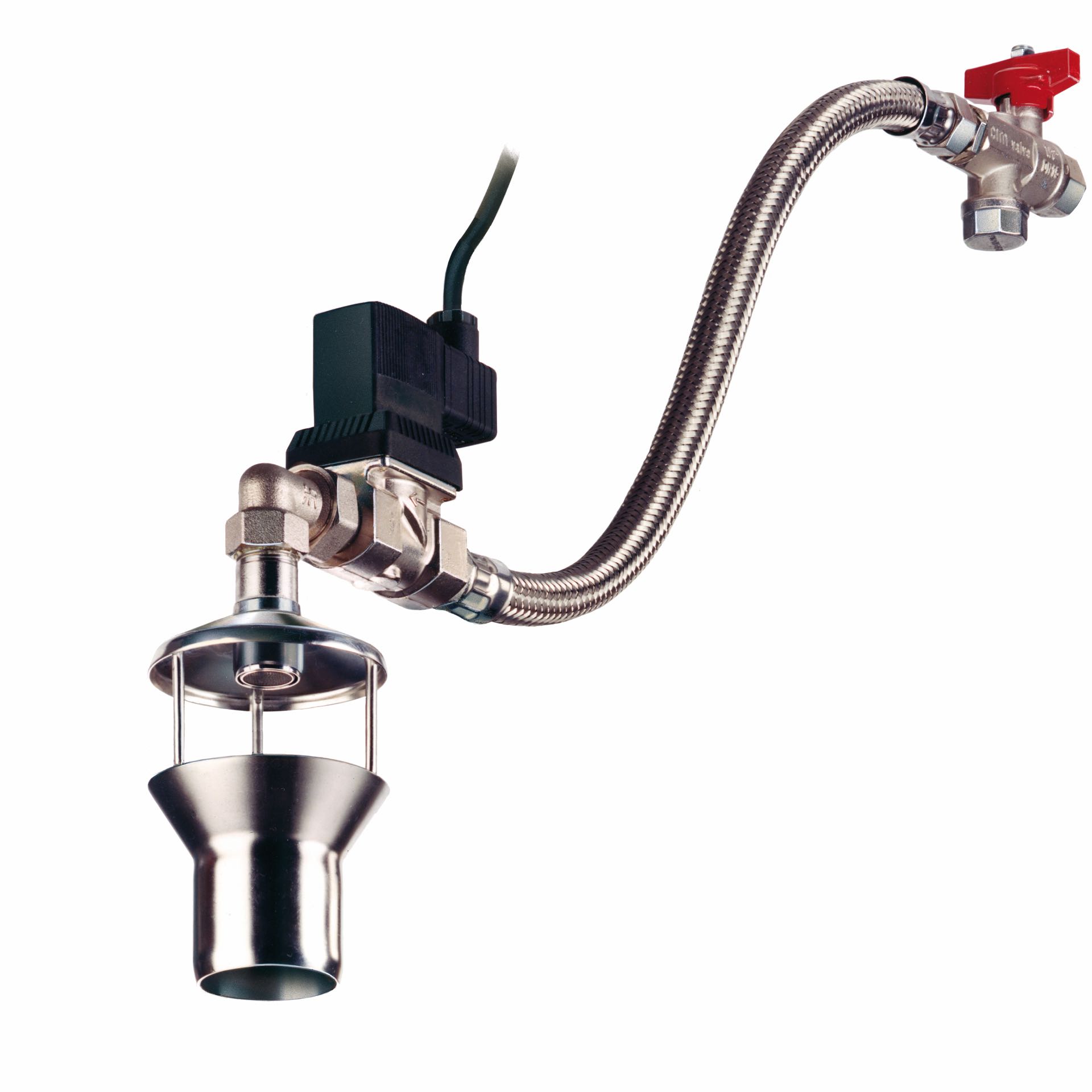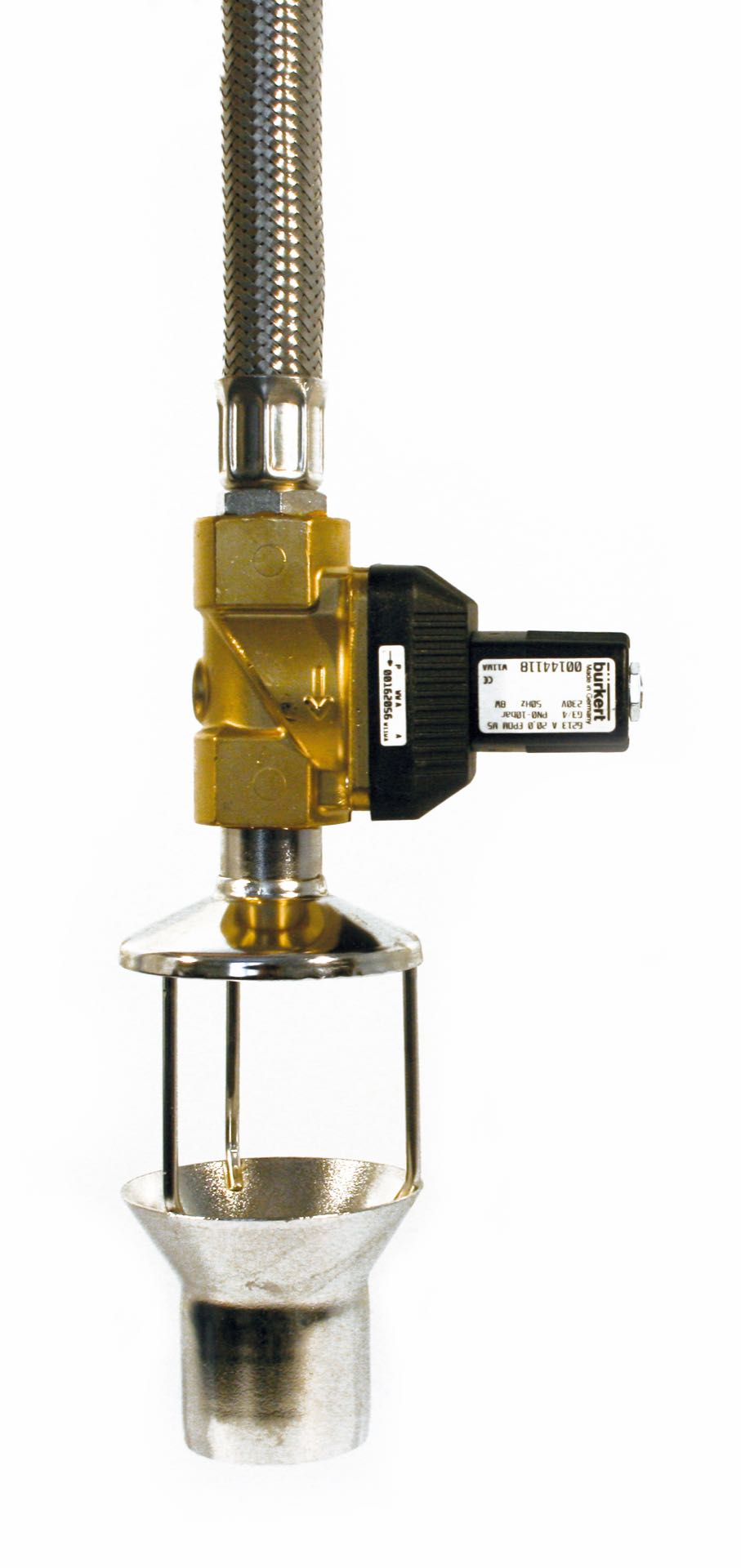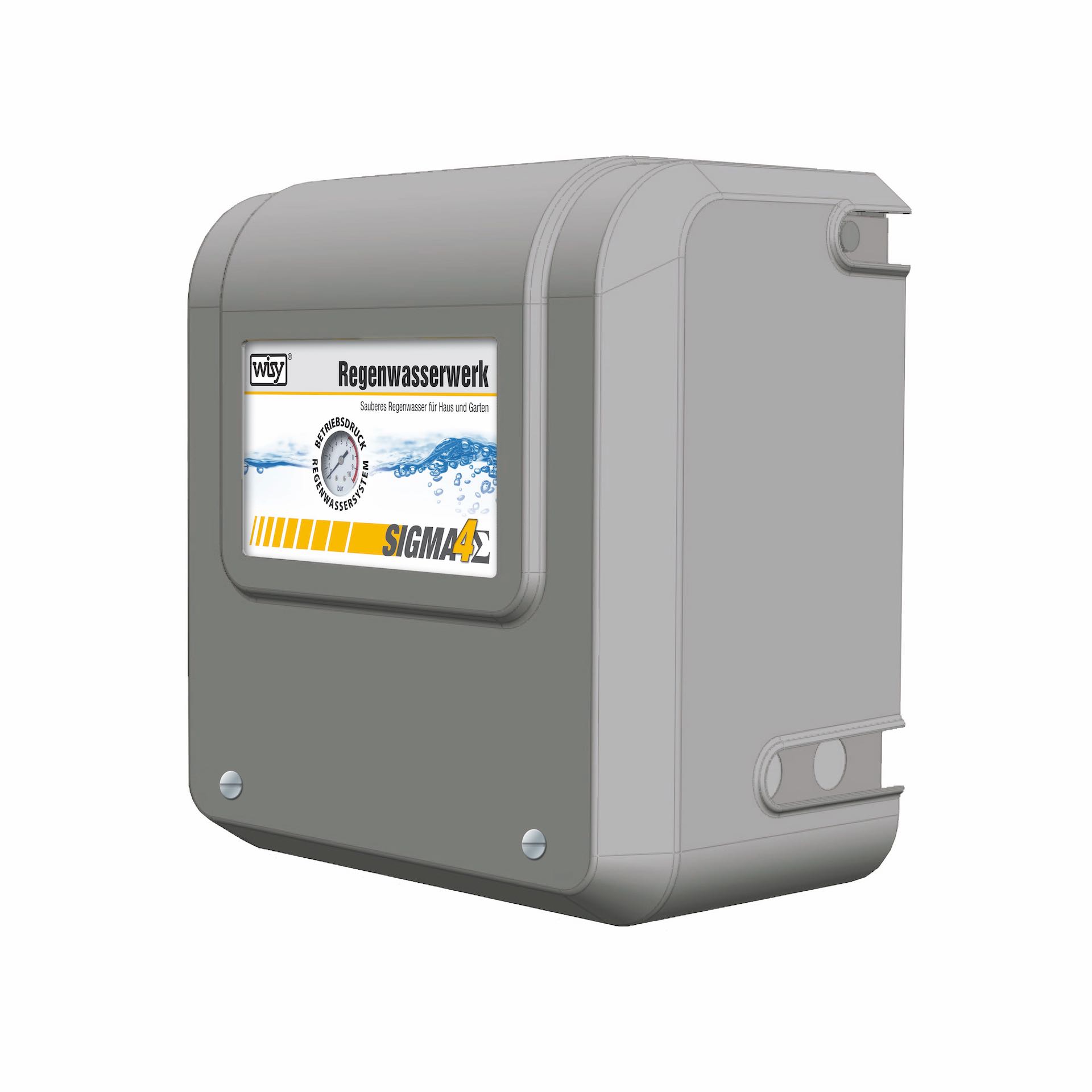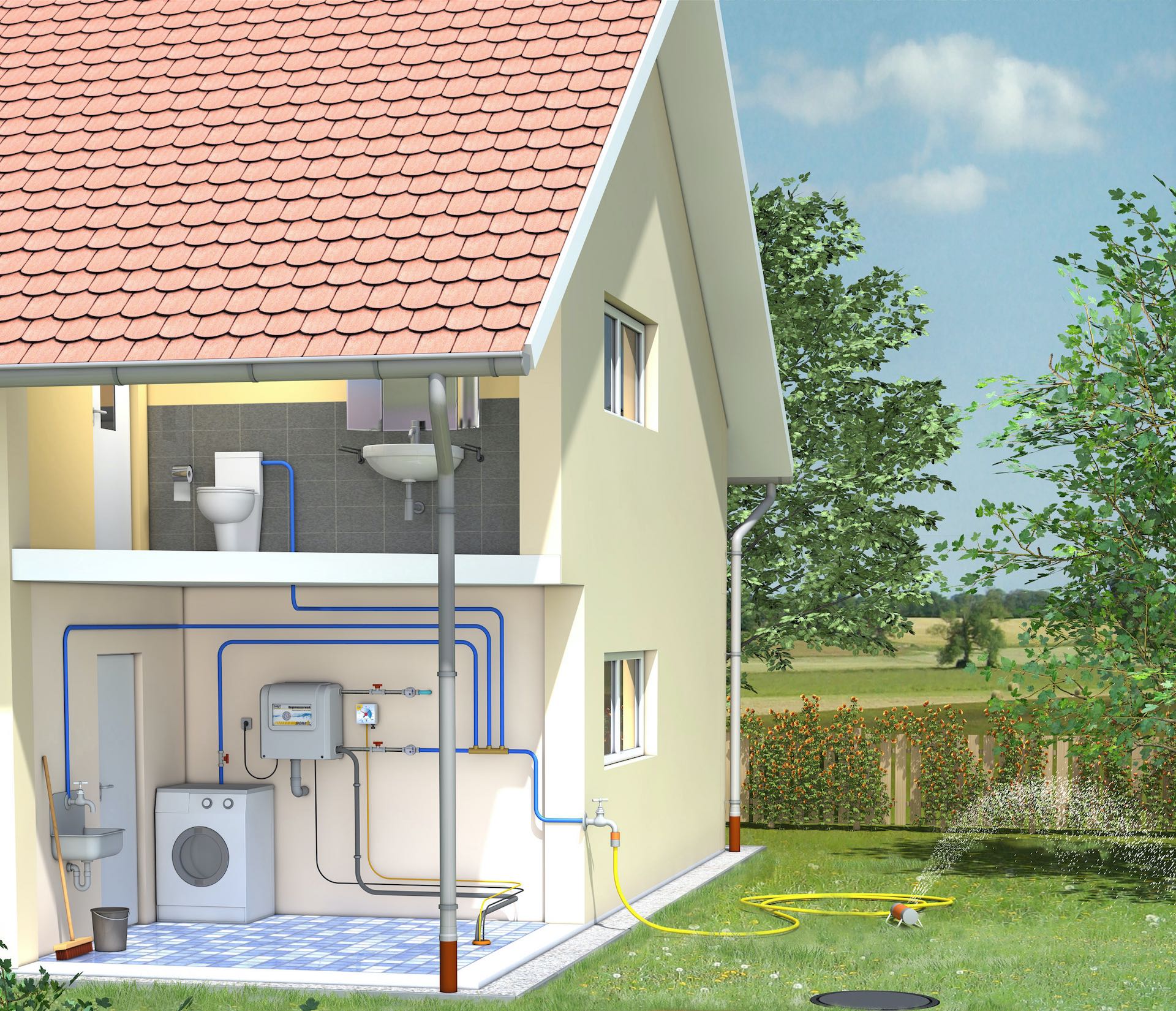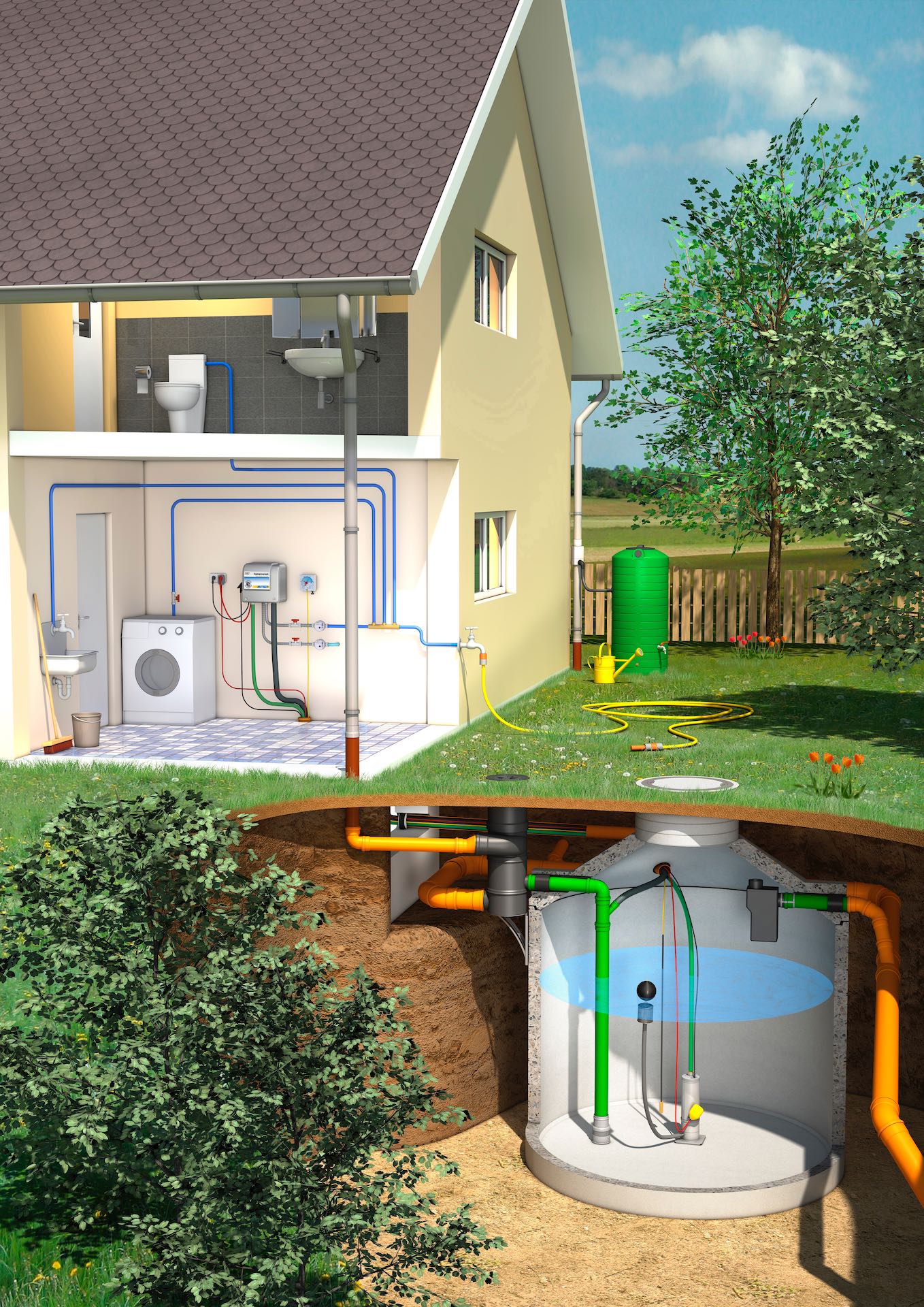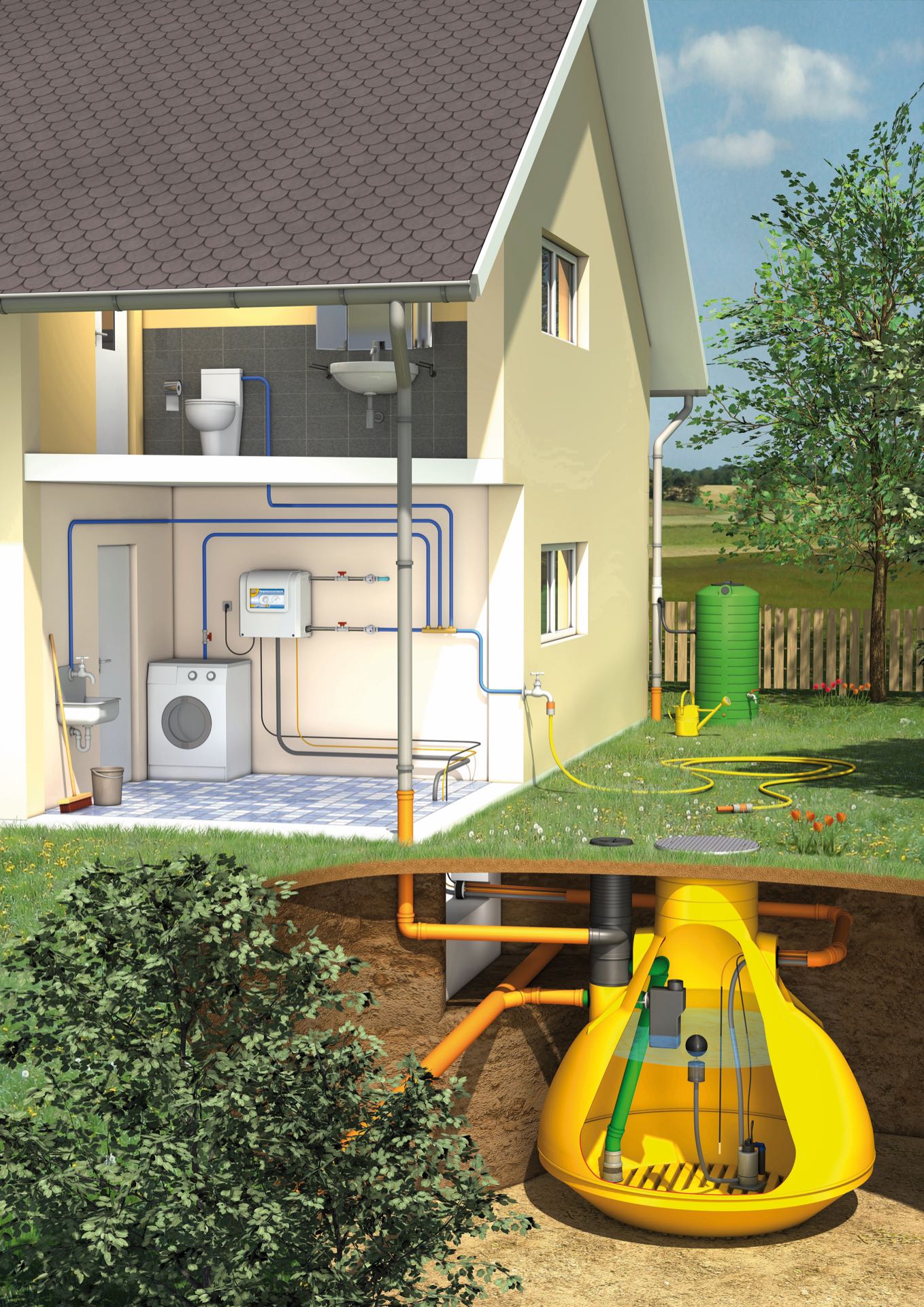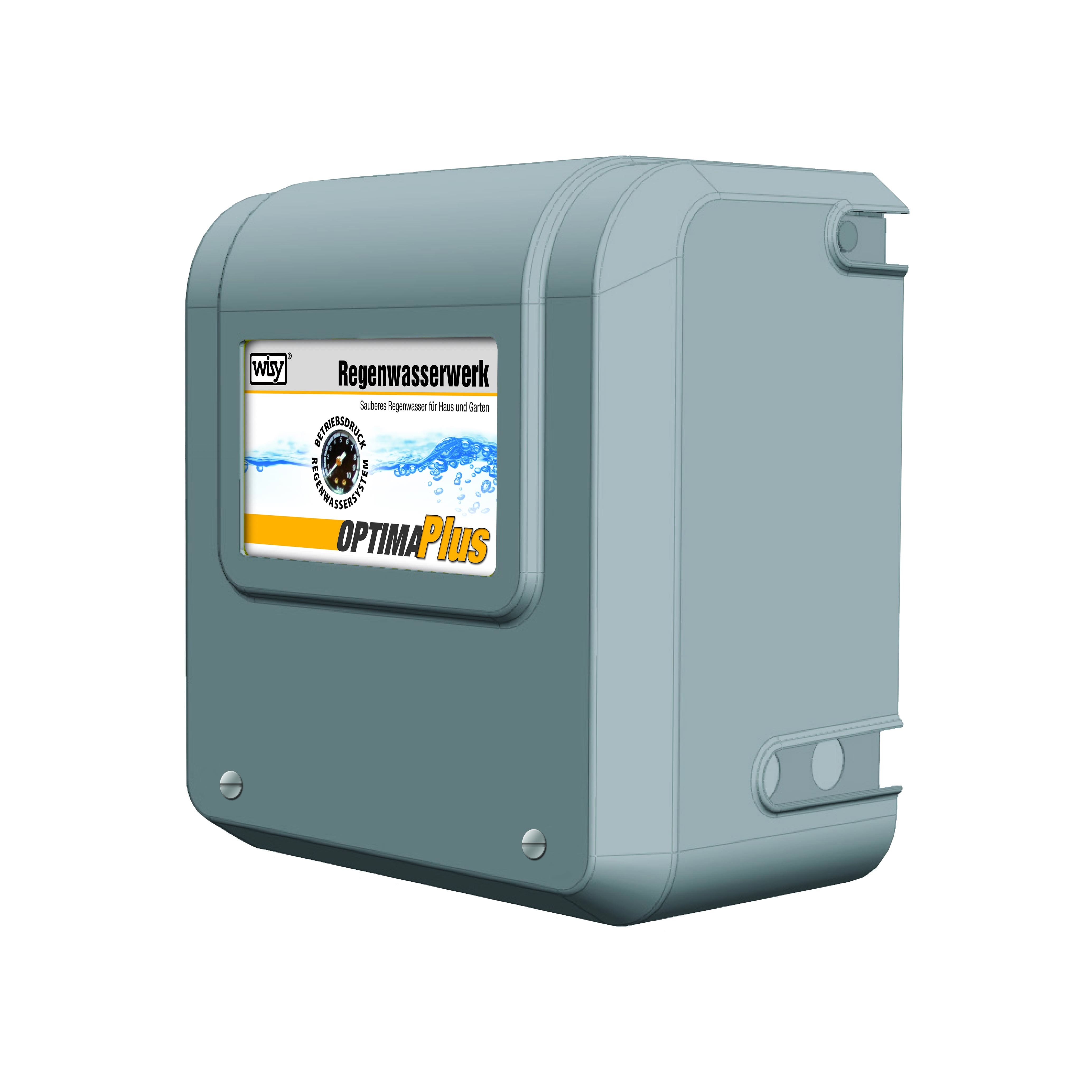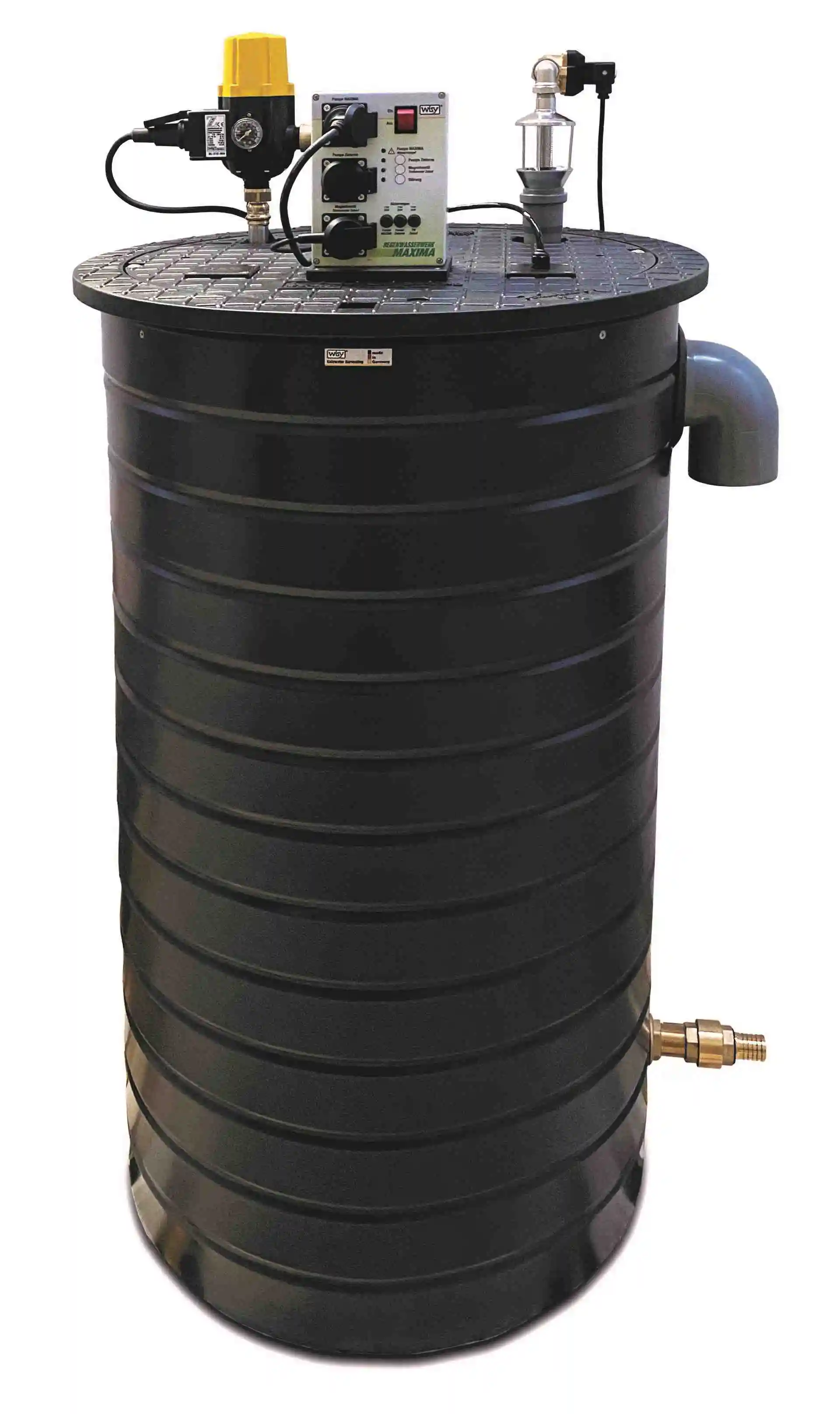Our products
for the construction of your rainwater system
In our shop you will find everything you need for rainwater utilisation. From rainwater filters to pump technology, rainwater systems or cisterns and rainwater barrels. You will also find the system accessories you need. We also offer a wide range of products for the system separation of service water and tap water.
Components of a
rainwater system
In larger rainwater systems, the rainwater flows through a so-called inlet calming system into the lower part of the rainwater storage tank. Corrosion-resistant pumps with a floating suction filter take over the task of transporting the water to the extraction points in larger rainwater systems with mostly underground tanks. This type of rainwater system can be found in single-family homes, industrial buildings and sports stadiums.
If, on the other hand, the rainwater is to be extracted with a watering can, the rainwater system is largely reduced to a downpipe filter with a preferably frost-proof rain barrel and a tap for water extraction.
Depending on the application, rainwater systems can have a different structure. However, they generally share some of the most important components, which vary in size depending on the area of application of the complete rainwater system.
For example, all rainwater systems have a rainwater filter, which is used to remove dirt, leaves and other particles from the rainwater so that they do not enter the rainwater system's storage tank.
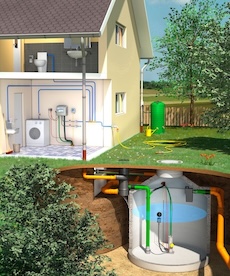
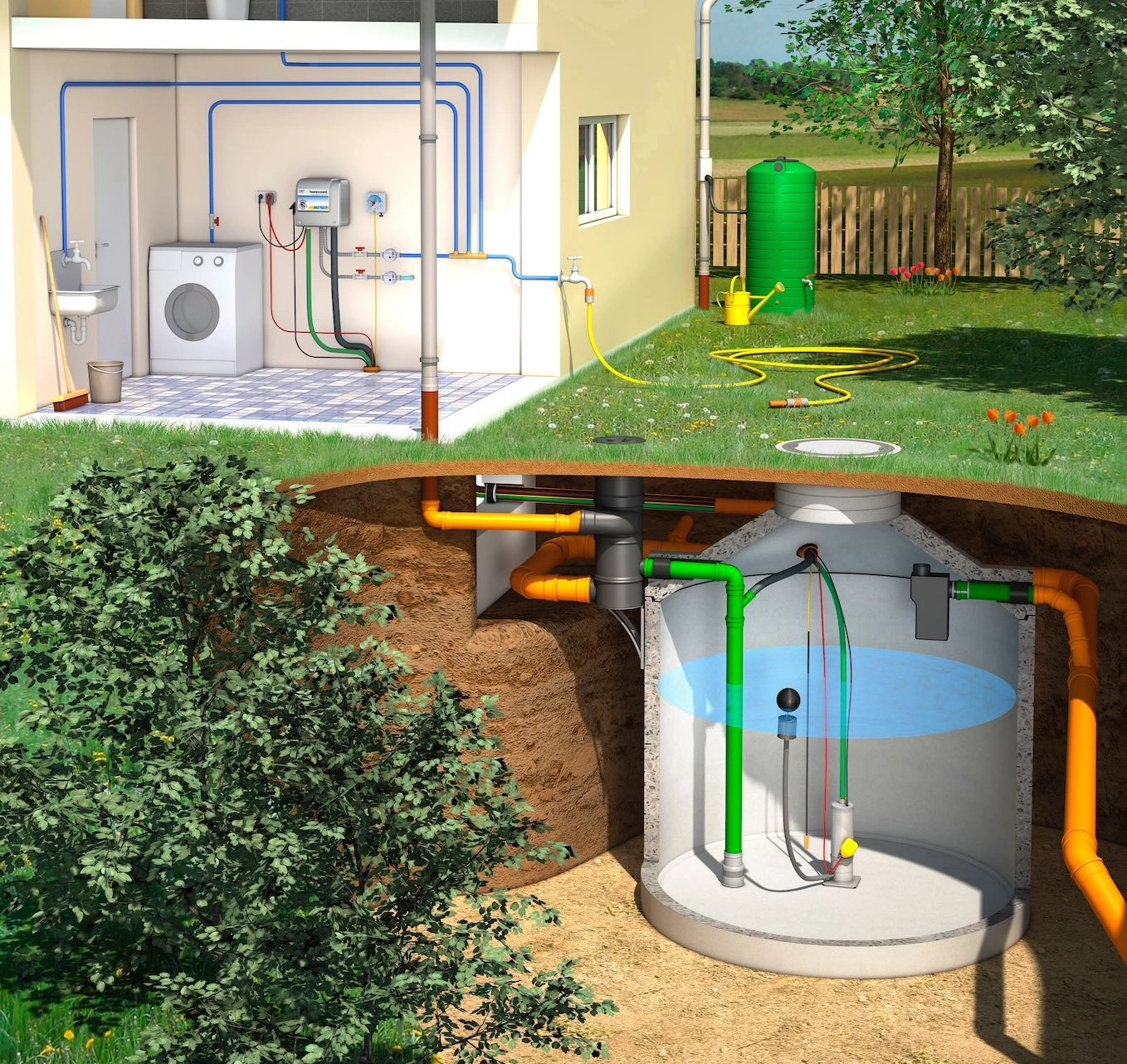
Rainwater filter
Rainwater run-off from the roof is channelled into the rainwater storage tank via a rainwater filter. Contaminants such as leaves and moss are reliably separated even before they enter the rainwater storage tank. The rainwater filter forms the first cleaning stage of the rainwater utilisation system.
Filter in the downpipe
Downpipe filters and rainwater collectors are installed directly in the downpipe, where they separate the rainwater from the dirt load. The function is best when the water is separated from the dirt without changing the direction in which the leaves fall. Any narrowing of the cross-section of the pipe should be avoided to allow the full flow of water to pass.
Filter in the ground or freely installed in the building
Alternatively, the rainwater can be filtered in the horizontal pipe system before it enters the cistern. The filter can either be placed inside the building or underground, accessible with a separate shaft .
Cistern filter
If no separate access to the filter is required or if the difference in height between the inlet and outlet is too small, cistern filters can be used to collect rainwater. They are installed in the manhole of the underground rainwater storage tank.
The rainwater tank
The rainwater tank or rainwater storage tank forms the centrepiece of a rainwater harvesting system. Depending on the desired size and installation situation, you can choose between a simple rain barrel or an underground cistern made of concrete or plastic. For large systems in particular, designs as a structural component of the building for collecting rainwater are also possible.
Rain barrel
The rain barrel is easy to set up and connect. It is placed slightly elevated so that you can take the rainwater with the watering can via a tap. For safety and to prevent mosquito breeding, the rain barrel or rain barrel should be tightly closed with a lid. This makes it easy to use rainwater with the watering can to water potted plants or the garden. A rainwater pump is not necessary, but the usable volume is limited.
Concrete or plastic cisterns
The best way to store precious water is in a cistern below ground level. There, at the heart of the rainwater harvesting system, it is protected from light and frost, and large storage volumes can also be realised. Depending on the tank model, lid, depth and type of soil, it can be driven over by vehicles.
Concrete cisterns are stable, but due to their heavy weight they require more effort for transport and installation. For this reason, concrete tanks are often produced regionally. They are made of a relatively natural raw material. The concrete has the positive effect that it does help to stabilize the ph of the stored water.
Cisterns made of plastic have the big advantage of easy handling. No heavy equipment is required for transporting and moving plastic tanks; a small mini excavator is usually sufficient. Delivery can be made in a car trailer.
Smoothing Inlet
The smoothing Inlet of rainwater into the tank allows fine dirt particles to sediment on the ground without being stirred up during the next rain shower. Oxygen is also transported into the tank with the fresh water. The feed near the ground distributes water and oxygen evenly throughout the tank and thus significantly improves the water quality.
The smoothing Inlet is the second part of the 4-stage cleaning system for rainwater and makes sure that clear and fresh rainwater can be used.
Floating suction filter
The collected rainwater is extracted from the rainwater storage tank with a floating suction filter. It floats about 10-20 cm below the water surface. This is where the best water quality is found in the cistern. There, the water is free of light, greasy particles such as pollen that float on the surface and free of heavier sediments that settle on the bottom.
The floating suction filter consists of a floating ball with suction filter. The filter can be made of fine or coarse stainless steel mesh. It provides additional protection for the pump and is referred to as the third purification stage of the rainwater harvesting system. When using a suction pump, a suction filter with an integrated non-return valve should be selected so that the water column in the suction hose does not have to be built up again every time the pump is started.
Overflow
Pollen or other dirt particles that are lighter than water float on the water surface. In doing so, they can build up a separating layer between water and air that blocks the exchange of oxygen between the media, which is important for water quality. To prevent this, an overflow with skim effect such as the Multisiphon should be used. It regularly ensures that this separating layer is flushed away and oxygen can be absorbed from the air in the water. The overflow forms the fourth purification stage of the rainwater system.
The overflow of the rainwater harvesting system is usually designed as an odour trap with a siphon. This keeps sewage gases out of the cistern. An optional vermin guard effectively prevents rodents from entering and an integrated backwash valve protects against backwashin the event of an overloaded sewer system.
The overflow of the cistern is connected to the sewer or an infiltration system.
Rainwater pumps
Self-priming pumps located directly in the rainwater plant or submersible pressure pumps located in the cistern of the rainwater harvesting system are possible. A combination of both is also possible. Larger systems in the commercial or public sector are often operated with dual-pump systems to increase efficiency and reliability.
The required pump pressure is calculated depending on the distance and height difference between the cistern and the points of use, the pipe cross-sections and the desired pressure at the taps. The maximum required delivery volume results from the demand peaks.
Automatic switch, float switch and solenoid valves
The automatic switch in the rainwater system, switches the pump on and off as needed. To do this, it monitors the pressure and flow in the pipes to the consumers. Float switches or level gauges of the rainwater harvesting system provide the required information and solenoid valves open or close the corresponding pipes.
The automatic switch is always in stand-by operation day and night, all year round, to detect a possible water demand and to activate the pumps immediately. Even if no water is being drawn at the moment. It is therefore essential to choose a device with the lowest possible energy consumption in stand-by mode.
Mains water top up via a free water inlet
If there is no longer sufficient rainwater available during prolonged dry periods, water can be replenished from the public mains. However, in this case - at least in the legal area of the European Union - the rainwater pipes must remain separate from the public pipes. This is done via a free outlet of the water into an intermediate tank or directly into the cistern.
Rainwater units
The rainwater unit is the head of the system for collecting and using rainwater.
Depending on the type, the rainwater system includes the rainwater pump, the automatic control unit, the float switches and solenoid valves as well as the standard-compliant mains water top up.
In this way, the rainwater system ensures that the rainwater system always functions as it should and that sufficient water is available everywhere at all times. It switches the pumps and, if necessary, ensures the standard-compliant top up of water from the public mains.
Accessories and components for rainwater systems
In addition to complete rainwater systems, you will of course also find all components and accessories for your rainwater system. Most of these have been developed by us and are produced in our factory in Hitzkirchen.
WISY relies on many years of experience and numerous patents of its own as a pioneer in the development of modern rainwater systems.
Get advice now on the purchase and construction of rainwater systems
Do you need support in selecting the right components for your rainwater system? Then you have come to the right place. As an experienced manufacturer, we will be happy to assist you in the selection of products for your rainwater system.
Do you have any other questions about rainwater systems or the sustainable and cost-effective use of rainwater? Then don't hesitate to contact us. Our friendly and competent team is there for you and is already looking forward to your enquiry.












